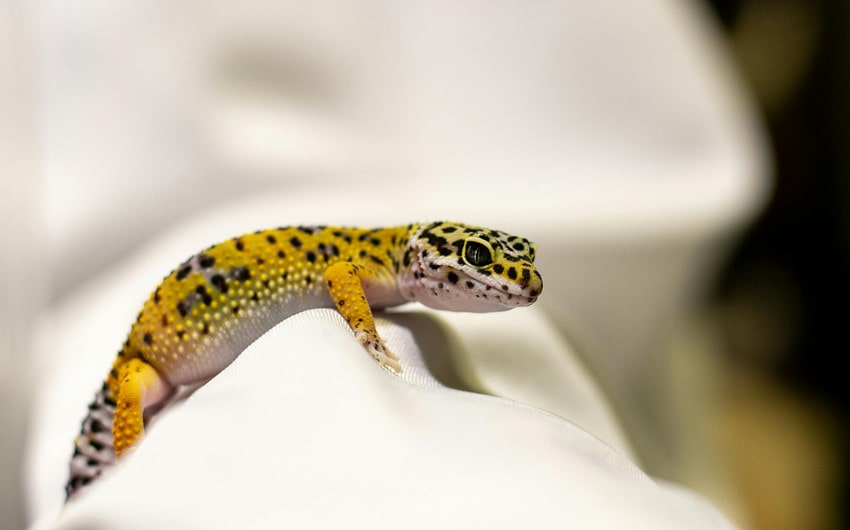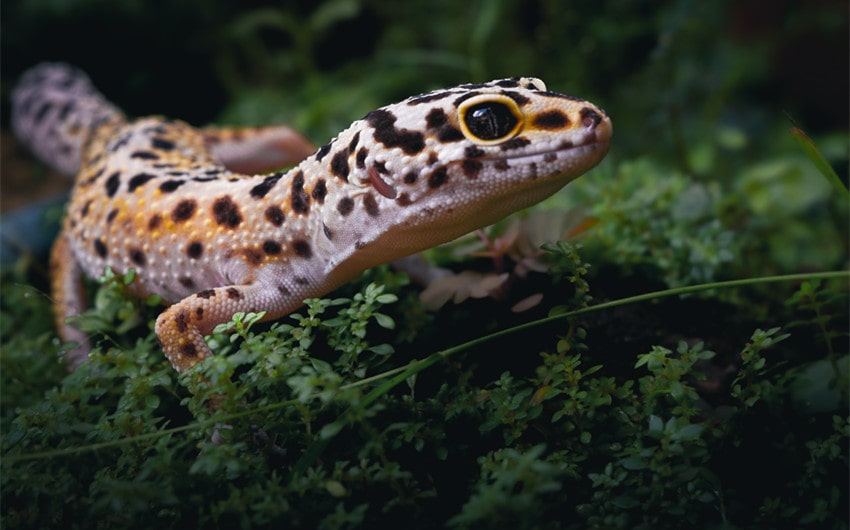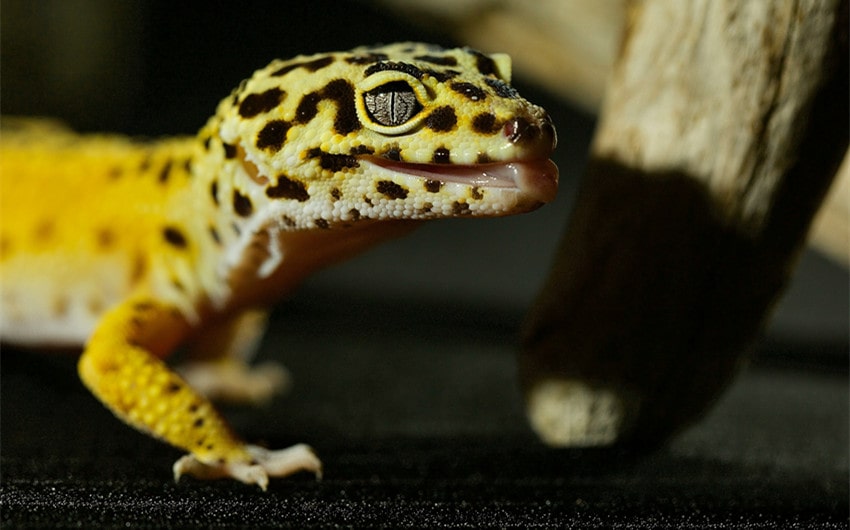Leopard Gecko Lifespan: 4 Essential Things You Should Know
Leopard geckos are one of the most popular reptile pets, known for their friendly nature and ease of care. If you’re considering bringing one into your home, understanding leopard gecko lifespan is essential to providing the best care possible.
These little lizards can live for many years with the right environment and attention, making them a long-term companion. In this article, we’ll explore the factors that influence their lifespan and what you can do to help your leopard gecko live a healthy, happy life.
Average Lifespan of a Leopard Gecko

Leopard geckos are known for their impressive longevity, especially when compared to other reptiles commonly kept as pets. On average, a leopard gecko in captivity can live anywhere from 10 to 20 years, with some individuals even reaching 25 years or more with exceptional care. This lifespan is significantly longer than that of many other small reptiles, making leopard geckos a long-term commitment for their owners.
Lifespan in Captivity vs. the Wild
Leopard geckos in captivity tend to live much longer than their wild counterparts. In the wild, these geckos face numerous challenges that can shorten their lifespan, including predators, harsh environmental conditions, and scarcity of food and water. As a result, wild leopard geckos often have a lifespan of 6 to 8 years. In contrast, those kept in captivity benefit from a controlled environment, regular feeding, and protection from predators, all of which contribute to their extended lifespan.
Comparison with Other Pet Reptiles
When comparing leopard geckos to other popular pet reptiles, their lifespan stands out as one of the longest. For instance, bearded dragons typically live 8 to 12 years in captivity, while corn snakes often live 15 to 20 years. Leopard geckos, with their potential to live beyond two decades, are among the longer-lived reptiles, which makes them a rewarding pet for those willing to commit to their care over the long term.
Factors Influencing Leopard Gecko Lifespan

The lifespan of a leopard gecko is influenced by several key factors, ranging from diet and habitat to genetics and healthcare. Understanding these factors can help you provide the best possible care for your gecko, ensuring they live a long, healthy life. Below, we explore each of these factors in detail.
A. Diet and Nutrition
1. Importance of a Balanced Diet
A well-balanced diet is fundamental to the health and longevity of a leopard gecko. In captivity, leopard geckos primarily eat live insects such as crickets, mealworms, and dubia roaches. It’s crucial to provide a variety of these insects to ensure that your gecko receives a broad range of nutrients. A diet lacking in variety can lead to nutritional deficiencies, which can shorten your gecko’s lifespan.
2. Supplementation Needs
In addition to a varied diet, leopard geckos require supplements to meet their nutritional needs, particularly calcium and vitamin D3. Calcium is essential for bone health and preventing metabolic bone disease (MBD), a common and serious condition in reptiles. Vitamin D3 helps the gecko absorb calcium properly.
These supplements can be provided by dusting the insects with a calcium and D3 powder before feeding them to your gecko. It’s also important to offer a multivitamin supplement once a week to ensure your gecko receives all the necessary vitamins and minerals.
3. Feeding Frequency and Portion Control
Young leopard geckos should be fed daily, while adults can be fed every other day. Overfeeding can lead to obesity, which can reduce a gecko’s lifespan by causing stress on internal organs and leading to other health issues.
It’s important to monitor your gecko’s weight and adjust feeding portions accordingly. Ensuring that your gecko is neither overfed nor underfed is key to maintaining their health over the long term.
B. Habitat and Environment
1. Proper Tank Setup
The environment in which your leopard gecko lives plays a significant role in their overall health and lifespan. A well-designed tank setup should mimic their natural habitat, providing areas for both basking and hiding.
The tank should have a warm side with a temperature of 88-92°F for basking and a cooler side around 75-80°F. A proper temperature gradient allows your gecko to regulate its body temperature, which is crucial for digestion and overall health.
2. Humidity Levels
Leopard geckos are native to arid environments, so maintaining the correct humidity level is important. The tank’s humidity should generally be kept between 30-40%, with a slightly higher humidity level (up to 70%) provided in a moist hide to assist with shedding.
Too much humidity can lead to respiratory infections, while too little can cause shedding problems, both of which can negatively impact your gecko’s lifespan.
3. Cleanliness and Regular Maintenance
A clean environment is essential for preventing disease. Regular cleaning of the tank, including removing waste and uneaten food, is necessary to prevent the buildup of bacteria and parasites.
Deep cleaning of the tank, including replacing substrate and disinfecting surfaces, should be done regularly to maintain a healthy living space. A well-maintained habitat reduces the risk of infections and other health issues that could shorten your gecko’s life.
C. Genetics
1. Role of Genetics in Lifespan Variation
Just like in humans, genetics play a significant role in the lifespan of leopard geckos. Some geckos are genetically predisposed to live longer, while others may be more susceptible to certain health issues.
When selecting a leopard gecko, it’s important to choose from a reputable breeder who can provide information about the gecko’s lineage and any potential genetic health concerns.
2. Breeding Practices
Breeding practices can also influence a leopard gecko’s genetics and, consequently, its lifespan. Inbreeding, for example, can lead to genetic defects and a shorter lifespan. Responsible breeders will ensure genetic diversity in their breeding programs, reducing the likelihood of hereditary health issues.
When acquiring a leopard gecko, asking about the breeding practices used can give you insight into the potential longevity and health of your pet.
3. Morph-Specific Health Concerns
Leopard geckos come in various morphs, or color and pattern variations, some of which are associated with specific health concerns. For instance, certain morphs, like the “enigma” morph, are known to have neurological issues that could affect lifespan.
Being aware of any health issues associated with specific morphs can help you better care for your gecko and take preventative measures to extend their life.
D. Health Care
1. Regular Vet Visits
Regular veterinary check-ups are crucial for catching potential health issues early. An experienced reptile vet can help monitor your gecko’s overall health, check for signs of disease, and provide advice on diet and habitat. Routine fecal exams to check for parasites are also recommended, as parasites can severely impact a gecko’s health if left untreated.
2. Common Health Issues
Leopard geckos are generally hardy reptiles, but they can still suffer from various health issues that can impact their lifespan if not addressed promptly. Common problems include metabolic bone disease (MBD), impaction (blockage in the digestive tract), respiratory infections, and parasites.
Early detection and treatment of these conditions are vital. For example, impaction can often be prevented by ensuring the gecko’s substrate is not ingestible and by feeding appropriately sized prey.
3. Monitoring Behavior and Physical Condition
Owners should regularly observe their gecko for any changes in behavior or physical condition. Signs such as lethargy, lack of appetite, weight loss, difficulty shedding, or unusual stool can indicate underlying health problems.
Prompt attention to these signs and seeking veterinary care when needed can prevent minor issues from becoming serious, thus extending your gecko’s lifespan.
Common Signs of Aging in Leopard Geckos
As leopard geckos age, they go through various changes that can affect their behavior, appearance, and overall health. Recognizing the signs of aging in your leopard gecko can help you adjust their care to ensure they remain comfortable and healthy throughout their later years. Below, we explore some of the most common signs of aging in leopard geckos and what they mean for your pet’s care.
1. Changes in Activity Level
One of the most noticeable signs of aging in leopard geckos is a decrease in activity. Younger geckos are typically more active, exploring their environment, hunting for food, and interacting with their surroundings. As they age, you may notice your gecko becoming less active, spending more time resting or hiding.
This decrease in activity is normal and usually indicates that your gecko is conserving energy. However, if your gecko becomes completely inactive or shows a significant drop in activity, it’s important to monitor their health closely, as this could also be a sign of illness.
2. Reduced Appetite
Another common sign of aging in leopard geckos is a reduction in appetite. Older geckos may eat less frequently and consume smaller portions compared to their younger counterparts. This decrease in appetite can be attributed to a slower metabolism as they age.
While some reduction in food intake is normal, it’s crucial to ensure that your gecko is still maintaining a healthy weight and receiving adequate nutrition. If your gecko’s appetite decreases drastically or they stop eating altogether, a visit to the vet is recommended to rule out any underlying health issues.
3. Weight Fluctuations
Weight changes are also common as leopard geckos age. Some older geckos may lose weight as their metabolism slows and their appetite decreases. This weight loss is usually gradual and can be managed by adjusting their diet to ensure they’re still getting enough nutrients.
On the other hand, some geckos may gain weight if they continue to eat as much as they did when they were younger but are less active. Regularly monitoring your gecko’s weight and adjusting their diet accordingly is important to maintain their overall health.
4. Changes in Skin and Shedding
As leopard geckos age, their skin may become thinner and more delicate, which can affect their shedding process. Older geckos may have more difficulty shedding their skin, resulting in retained shed, particularly around the toes, tail, and eyes. Retained shed can restrict blood flow and cause complications if not addressed.
To help your aging gecko shed more easily, you can provide a moist hide with higher humidity or gently assist them in removing stuck shed with a damp cloth. Regularly checking your gecko after shedding to ensure all skin is removed is essential for their comfort and health.
5. Dullness in Coloration
Aging leopard geckos may experience a gradual dulling of their coloration. While younger geckos often have vibrant and bright colors, older geckos might show a more muted palette as their pigments fade over time.
This change is a natural part of the aging process and doesn’t necessarily indicate poor health. However, if the color change is accompanied by other signs of illness, such as lethargy or skin lesions, it’s important to consult a veterinarian.
6. Decreased Reproductive Activity
In females, one sign of aging is a decrease in or complete cessation of reproductive activity. Younger female leopard geckos may lay eggs regularly, even without the presence of a male. However, as they age, their reproductive cycles may become less frequent or stop altogether.
This decrease is normal and can actually be beneficial, as egg production can be physically taxing on the gecko. If your older female gecko stops laying eggs, there’s typically no cause for concern, as long as she remains healthy in other aspects.








